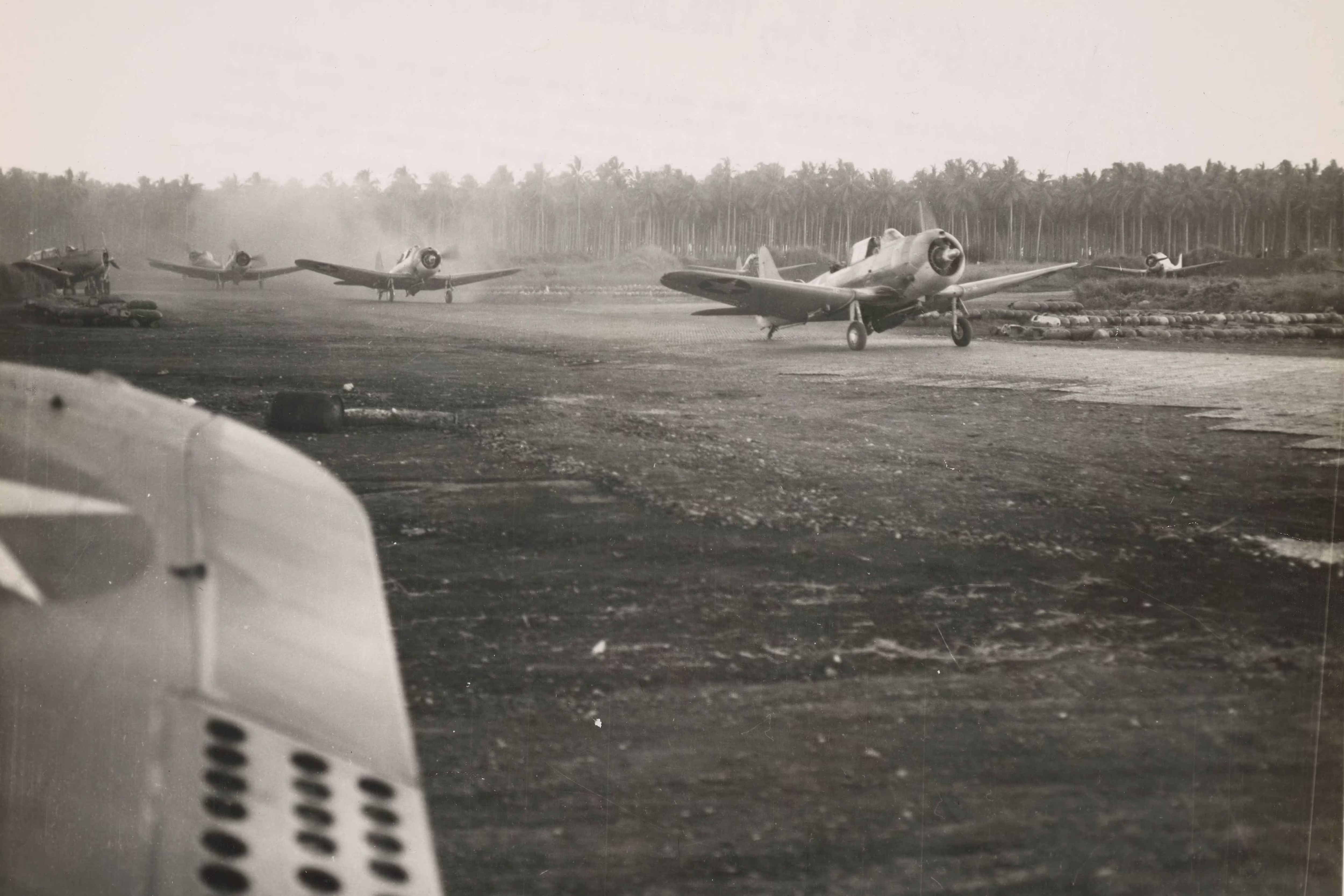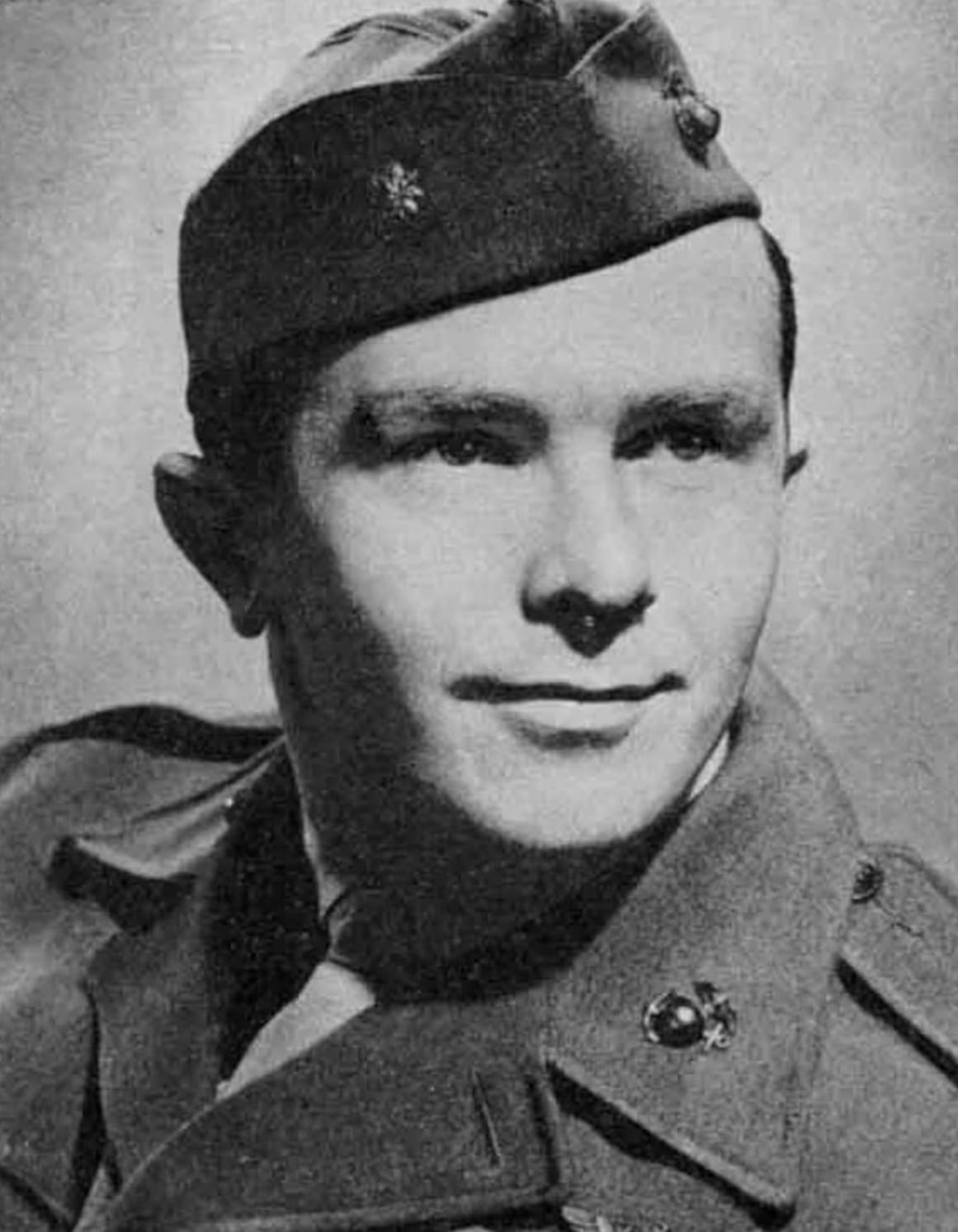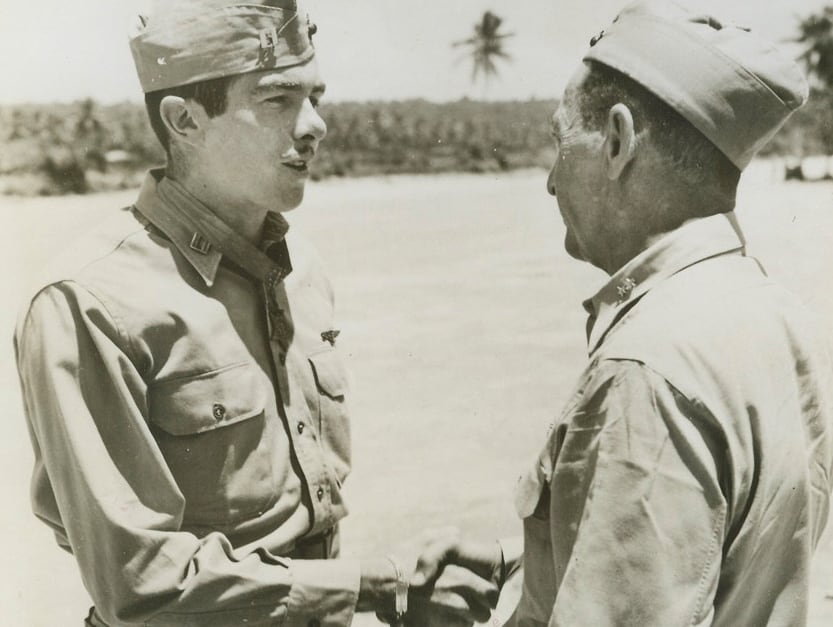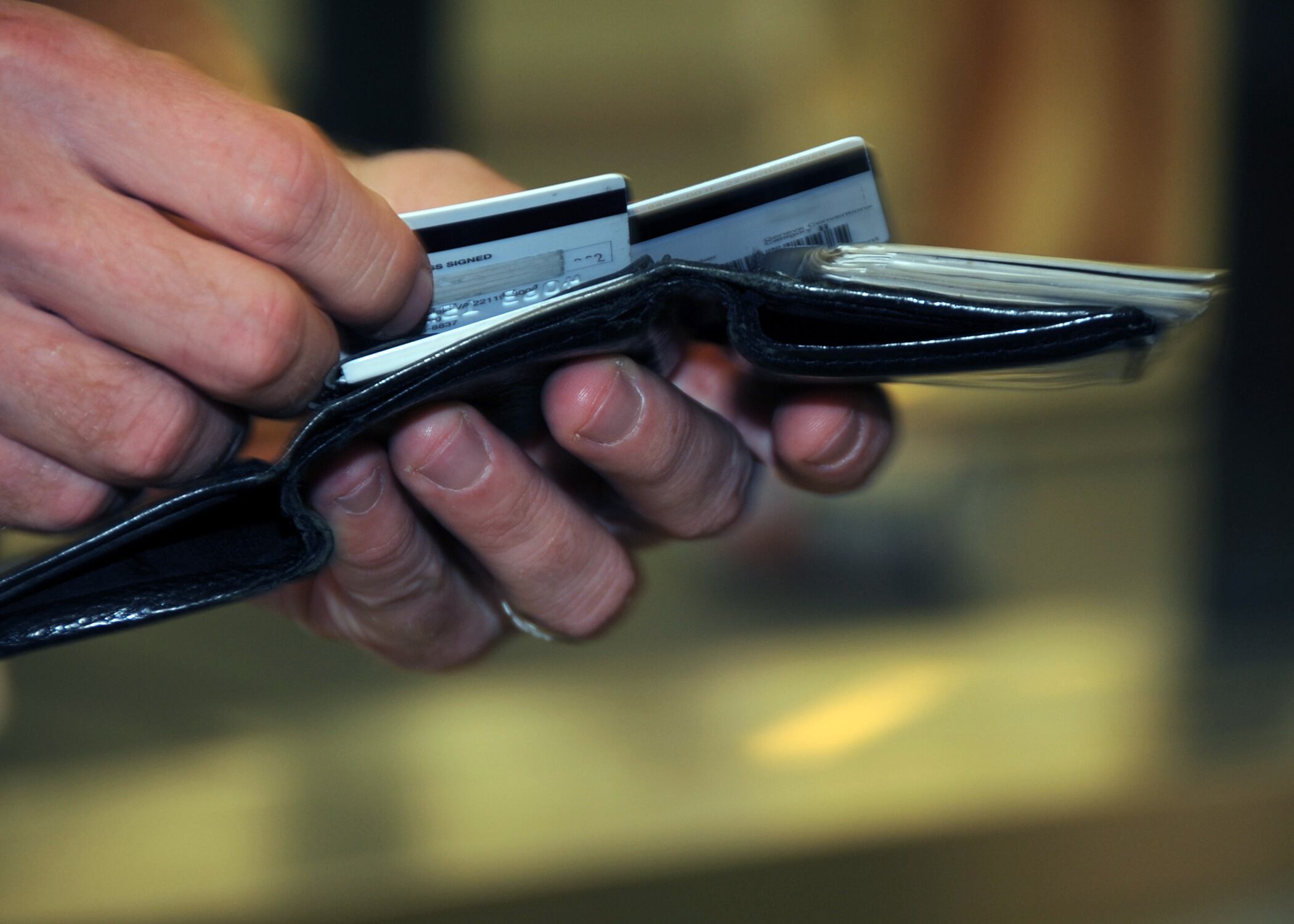“Ace in a day” is a rare distinction among fighter pilots. Among the earliest American multi-aces, Jim Swett was credited with seven aerial victories amid a turning point in World War II — and would more than double his score thereafter.
James Elms Swett was born in Seattle, Washington, on June 15, 1920, and grew up in San Francisco. After entering San Mateo Junior College in September 1939, he enrolled in the Civilian Pilot Training Program and by June 1941 had a pilot’s license and 240 flying hours. In August 1941 he enlisted in the Naval Aviation Cadet program at Naval Air Station Corpus Christi, Texas — transferring afterward to the U.S. Marines.
Commissioned on April 12, 1942, and taking a communications course at Quantico, Virginia, Swett — then a first lieutenant — was sent to Hawaii in November 1942 and assigned to Marine fighter squadron VMF-221. Equipped with Grumman F4F-4 Wildcats, VMF-221 shipped to the New Hebrides in the South Pacific in January 1943, and on March 16 to Fighter 2 airstrip, a satellite of Henderson Field on Guadalcanal.
By then the six-month campaign for the island was over, but Admiral Isoroku Yamamoto been concentrating Japanese naval air strength for Operation I, a counteroffensive in the Solomons and New Guinea.
Operation I got underway in earnest at 0430 hours on April 7, 1943, with a Lockheed F-5A — a photo reconnaissance version of the P-38 Lightning — reporting 100 aircraft staging over Kahili airfield in southern Bougainville, as well as 95 at Buin.
At the time Swett and seven other F4Fs were circling over a new airfield being built in the Russell Islands, codenamed Knucklehead. After refueling at Henderson, Swett led a patrol over Cape Esperance at 0900, but upon landing they were ordered by the Commander Air in the Solomons Rear Adm. Marc A. Mitscher to replenish and get airborne again.

VMF-221′s two divisions were then directed to Tulagi harbor, 40 miles northeast of Henderson Field.
No sooner did VMF-221 arrive over Tulagi when Swett saw the Japanese coming — 67 Aichi D3A2 “Val” dive bombers and 110 Zekes.
The Wildcats were flying at altitudes of 15,000 to 20,000 feet and Swett was half-mile ahead of his wingmen when they were jumped by Zeros. For all intents and purposes Swett was alone when he saw the first gaggle of “Vals” going into their dives in loose V formations of six.
Swett’s six .50-caliber machine guns were boresighted to converge 150 yards ahead, but he was only about 50 yards from his first target. Firing two- to three-round bursts, he set his first, second and third targets on fire in quick succession — “like shooting fish in a barrel,” he later recalled. But he also noticed bombs striking a tanker and a destroyer, and that his altitude was down to 1,000 feet.
As he pulled out of his dive, his wing was hit by a 40mm round — fired by one of the Allied ships — which destroyed his landing flaps and one of his guns.
He took cover in heavy clouds, then headed east until he found a break in the clouds over Florida Island. That also brought him into contact with what he described as “about a dozen more Vals, scattered all over the sky.”
Judging his damaged Wildcat still fit to fight, Swett saw a D3A make a left turn, came up to its tail and sent it down in flames. He repeated the performance on three more, bringing his tally to seven.
At that point, Swett confessed, “I was cocky at the time,” as he closed on another D3A. “This gunner knew what he was doing. I was coming in from the side and he just let me have it in the engine and the cockpit.”
Wounded in the chin, Swett managed to get some rounds into the enemy plane and was sure he killed the gunner before leaving it “smoking like the dickens.”
With his ammunition used up and his oil cooler hit, he was one or two miles off Florida Island when zero oil pressure caused his engine to seize. Gliding into the water with no flaps, the Wildcat bounced and sank.
Swett was 20 feet deep before he struggled free of his harness. Upon reaching the surface, he inflated his Mae West and half-inflated his seat raft. His gunsight had broken his nose, and his face was scratched from shards of his shattered windshield, but otherwise he was uninjured. A Coast Guard picket boat rescued him 15 minutes after splashing down.

Japanese records shed some light on the identity of Swett’s victims. Fifteen D3As from aircraft carrier Junyo’s Kokutai (air group) struck at U.S. Navy ships off Lunga Point, scoring a direct hit and four near misses on the destroyer Aaron Ward, as well as six near misses that damaged landing ship tank LST-449, for the loss of one dive bomber.
Hiyo’s 17 D3As attacked transports in Sealark Channel, damaging the 14,500-ton oiler Kanawha with five near misses, also for the loss of one plane. Tulagi was the target of Zuikaku’s 17 dive bombers and 18 D3As from the 582nd. Zuikaku lost three of its D3As, while the 582nd Kokutai lost four — including that of Lt. Tamotsu Takahata, whose gunner, Chief Petty Officer Kazuma Komazawa, had been killed and his engine disabled by Swett’s gunfire.
Takahata force-landed on the beach and was killed by islanders, who turned papers they found on him over to American intelligence. In exchange for those heavy losses, Zuikaku’s planes sank the Royal New Zealand Navy corvette Moa and six of their bombs straddled the American sub chaser SC-668.
“I watched the Aaron Ward attempt to reach Guadalcanal with stern down,” Swett said, “but it sank after I hit the water.”
Kanawha was beached and sank the next day. The oiler Tappahannock and cargo ship Adhara were damaged.
Allied anti-aircraft gunners claimed 11 Japanese aircraft on April 7, but there was clearly a lot of duplicating of pilots’ and ships’ claims. Whatever the actual cause of their demise — air or shipboard gunfire, or both — Zuikaku’s and the 582nd Kokutai’s losses indicate that Swett either shot down or at least contributed to the demise of all seven.
Admiral Yamamoto launched more air strikes on April 11, 12 and 14 before terminating Operation I on the 16th, satisfied with the reported results.
His air onslaught had indeed done considerable damage, but nowhere near as much as his overoptimistic aircrews claimed and not enough to seriously hinder the Allied offensive to come. Yamamoto did not live long enough to reassess his limited achievement, however. While flying to inspect the airbase at Ballale on April 18, his bomber-transport was shot down by P-38Gs of the 339th Fighter Squadron.
While Swett convalesced in Australia recovering from his facial injuries and a possible concussion, Adm. Mitscher was recommending him for the Medal of Honor. Swett was offered an early return to the United States, but he turned it down. The April 7 donnybrook had been his first combat, and he didn’t want it to be his last.
When Swett returned to the Solomons in May 1943, VMF-221 had exchanged its F4F-4s for F4U-1 Corsairs.
Promoted to captain on May 31, Swett got his next opportunity to fight on June 30, when Allied forces landed on Rendova and New Georgia islands. The aerial confrontation that ensued included 16 Corsairs from VMF-221, with Swett destroying two Mitsubishi G4M1 Betty bombers, shared credit on a Zeke and recorded a probable downing of a second Zeke.
On July 11, Swett downed a reconnoitering G4M “snooper” of the 705th Kokutai over Kula Gulf. He and his squadron then got into a wild dogfight with escorting Zeros, most likely from the 582nd Kokutai.
On the American side, 1st Lt. Albert Hacking Jr. claimed a twin-engine fighter northwest of Vella Lavella, while Harold Segal claimed two Zeros before he was shot down and wounded but subsequently rescued by the destroyer Taylor.
Swett, too, said he “downed a Zero who was chasing Segal — I cut off his wing, much to the pilot’s surprise!”
Swett was then himself shot down. After ditching and almost drowning, he spent four days in his rubber raft before being rescued.
On Oct. 9, Swett was awarded the Medal of Honor for his actions on that April day, but that did not slow the Marine down. Just nine days later the ace claimed a Zeke and probably downed another over Kahili.
On Nov. 2, VMF-221 flew cover for the U.S. Navy task force supporting Marine landings in Empress Augusta Bay on Bougainville Island, during which Swett was credited with two Vals and a probable downing of a Zero.
On Nov. 19, VMF-221 completed its second tour of duty and returned to the United States, having added 77 victories to the 12 it had previously claimed at Midway.
After reorganizing at Miramar, California, in January 1944, the squadron was transferred to Santa Barbara to train at taking off and landing from carrier decks. In December 1944, VMF-221 — with Capt. Swett as its executive officer — and VMF-451 were assigned to the carrier Bunker Hill, as components of Carrier Air Group 84.
Serving as Vice Adm. Marc Mitscher’s flagship, Bunker Hill took part in the invasion of Iwo Jima in February 1945, as well as air strikes on mainland Japan that month and in March.
By that time the desperate Japanese were sending new pilots on suicidal kamikaze missions against the Allied aircraft carriers. That effort reached its horrific climax when the Americans landed on Okinawa on April 1.
Between April 6 and mid-June waves of kamikazes, called kikusui (“floating chrysanthemums”) by the Japanese, were thrown at the American and British task forces.
On May 11, 1945, Swett received Corsair Bureau No.82280. The F4U-1C was armed with four wing-mounted 20mm cannons in place of the usual six .50-caliber machine guns.
During a day’s combat air patrol on May 11, 1945, Swett, now flying the Corsair F4U-1C, encountered a Nakajima B6N1 “Jill” torpedo bomber.
Judging the American fighter screen impregnable, the Japanese pilot turned back, probably to try again later. But Swett gave chase.
“I made a high-side run as he was trying to get back to Japan,” he recalled. “When those four 20s fired, the whole plane shook. When it hit the enemy — wow, I couldn’t believe it. I tore him to pieces. He didn’t know what hit him.”
Swett’s official score now stood at 15 1/2, but his return to Bunker Hill would be less than triumphant, with the pilot later recalling:
I was preparing to land and while we waited, 16 more aircraft joined up — 12 Corsairs and four Grumman F6F photo planes. We watched, much to our horror, as two [Japanese pilots] dived on the carrier.
One smashed into the rear deck, dropping his 500-pound bomb before crashing into the parked aircraft on the deck. His bomb exploded after penetrating the flight deck and went off alongside the ship, killing most of the flight deck crews who were manning their 20mm guns.
The second plane did a wingover off the port side of the ship and dove toward the deck where it meets the island, dropping his 500-pound bomb into VF-84′s ready room, which killed 50 U.S. Navy pilots who were getting ready to fly! The second plane hit the deck and exploded — the [pilot’s] body was later found to be intact but every bone was broken.
We watched the whole thing and saw people jumping overboard, some with and without life jackets. I ordered my flight to dive down and drop their dye markings, boats and even their Mae Wests and all 20 of us dropped our gear — later we were thanked profusely by those who were rescued. How many were attacked by sharks in the water I have no idea, but sailors have told me that the dye marker ‘sure helped, as did the life rafts that we sat on.’
While light cruiser Wilkes-Barre and three destroyers fought the fires that ravaged Bunker Hill’s flight deck, Mitscher transferred his flag to the carrier Enterprise.
“We were then getting low on fuel and requested a ‘deck,’” Swett said. “Enterprise responded and we proceeded to land aboard. As I rolled to a stop, a crewman frantically told me to ‘Get out!!’ and he proceeded to push my brand new F4U-1C overboard! There wasn’t enough room for our 20, plus Enterprise’s own aircraft. I was fuming! One small — read large — coincidence is that the guy who was responsible for pushing my plane over the side, Aviation Mechanic’s Mate Lee Hayes, lives where I do now. He’s a nice guy and we’ve grown to be good friends, but I tell him every so often that ‘I’m still pissed off at you!’”
After a 24-hour struggle Bunker Hill’s flames were extinguished, but the casualties totaled 396 killed or missing and 288 wounded.
In its final tour VMF-221 was credited with 66 victories, giving the squadron a grand total of 155 since the 1942 Battle of Midway.
Swett continued his career after World War II ended, but his combat flying days were over. He transferred to the Marine Reserves in 1945, by which time he had also been awarded the Medal of Honor, Distinguished Flying Cross with oak leaf cluster, the Purple Heart, the Air Medal and three Strike/Flight Air Medals.
When the Korean War broke out on June 25, 1950, he tried to get into the conflict, saying, “They wouldn’t take me for Korea, because I had the Medal of Honor, it was an undeclared war and I was a lieutenant colonel — they only took flying officers up to the rank of major.”
Jim Swett retired from the U.S. Marine Corps Reserves in 1970 as a full colonel. He died of a heart attack in Redding, California, on June 18, 2009, at the age of 88, and was buried in the Northern California Veterans Cemetery in Igo, California.
The airport at Trinity Center, California, is named in his honor.





